Located in the heart of Man Sagar Lake in Jaipur, India, the Jal Mahal Palace is among the most exquisitely designed structures ever constructed. Known by another name, the Water Palace, it was built in the eighteenth century and has a variety of architectural styles.
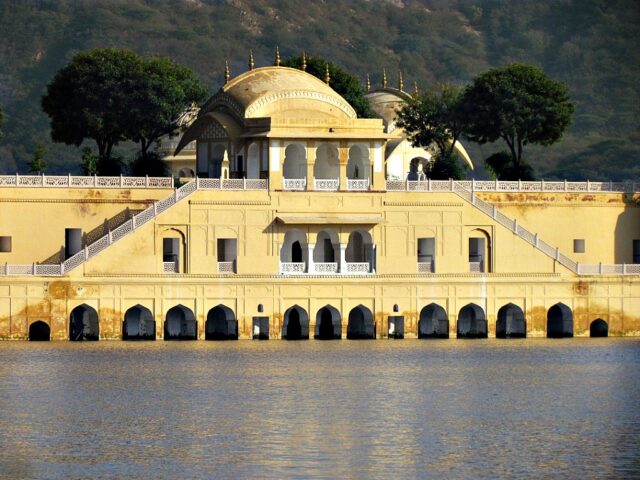
Almost a century after the construction of the artificial reservoir Man Sagar Lake, the Jal Mahal was built in 1699.
Red sandstone is used in the construction of the palace’s five levels. Nevertheless, only the top story is visible due to rising water levels. When the lake reaches its highest point, the others are submerged. The Jal Mahal’s interior abounds in grandeur thanks to hand-painted artwork and spotless stairs.
There formerly existed a garden with semi-octagonal towers with exquisite cupolas at each corner on the palace’s expansive terrace. There is an octagonal Chhatris at each of the palace’s four corners, and a square Chhatri in the Bengali style is located on the roof.
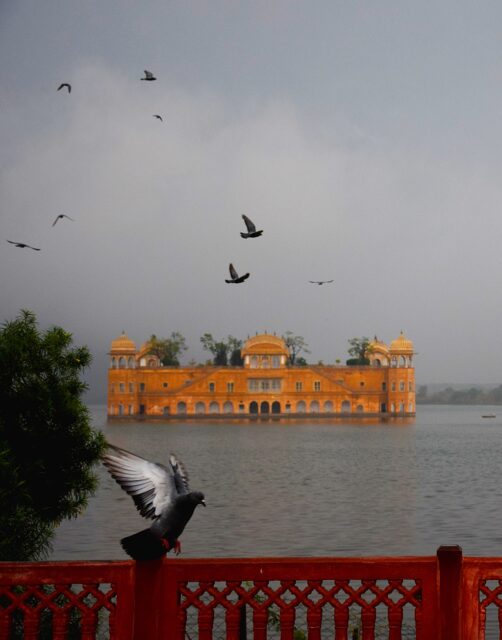
The Rajasthani government restored the Jal Mahal in the beginning of the twenty-first century, although it had sustained extensive water damage throughout the ages. Since the repair effort was insufficient, an expert was brought in to review the building’s architecture and make a comparison with the original.
The walls’ newly applied plasterwork was taken down. The traditional organic materials utilized in India were employed to replaster them. The terrace, which was modeled after the Amer Fort’s, was another upgrade.
The Jal Mahal seems like something out of a fairy tale when lit at night after lights were installed on the walls during its renovation.
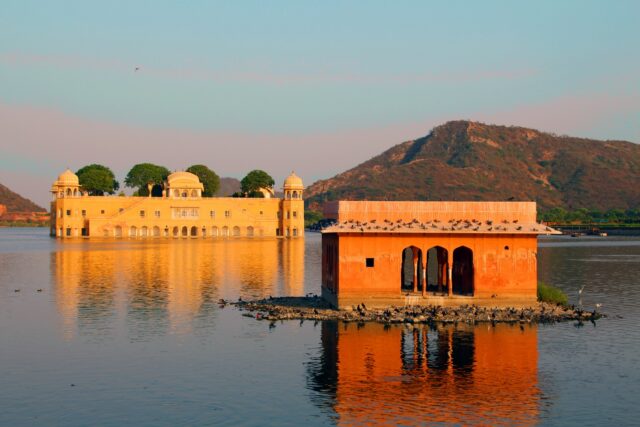
The Aravalli Range includes the hills that around Man Sagar Lake. The region had a famine in 1596 as a result of drought. To aid the population and preserve water, the Amer king of the time constructed a dam. It covered the eastern valley and was composed of quartzite and earth.
The dam was transformed into a stone structure in the seventeenth century. The three sluice gates on the 980-foot-long, still-existing building discharge water for use on agricultural land. Numerous kings have since repaired the lake, palace, and dam numerous times.
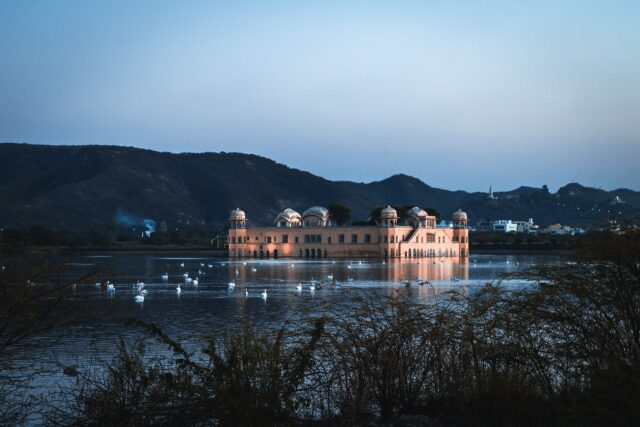
The Man Sagar Lake supplied drinking water to the community for many years. Numerous bird species, such as flamingos, pintails, kestrels, marsh sandpipers, gray wagtails, and coots, also called it home.
Unfortunately, Jaipur’s urbanization turned it into a dump for trash, waste, and raw sewage, seriously harming the lake’s environment and the surrounding area. The tainted groundwater also created health risks.
Eventually, the stench was so severe that it discouraged people from visiting the Jal Mahal.
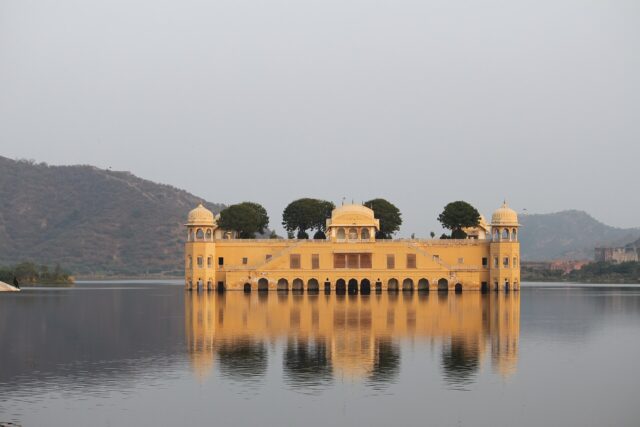
The property was taken over by the Rajasthan Tourism Development Corporation in 2004 with the goal of making it a tourist destination. The Jal Mahal’s submerged sections were restored and the lake was cleaned up for more than ten years. As a sign that the Man Sagar Lake was now clean enough to sustain life, birds started to return.
The Jal Mahal is a popular tourist destination from all over the world since it is still breathtaking even from the road. A wooded region with a variety of species, such as the Indian fox, jungle cats, deer, leopards, and boars, is located next to the lake.